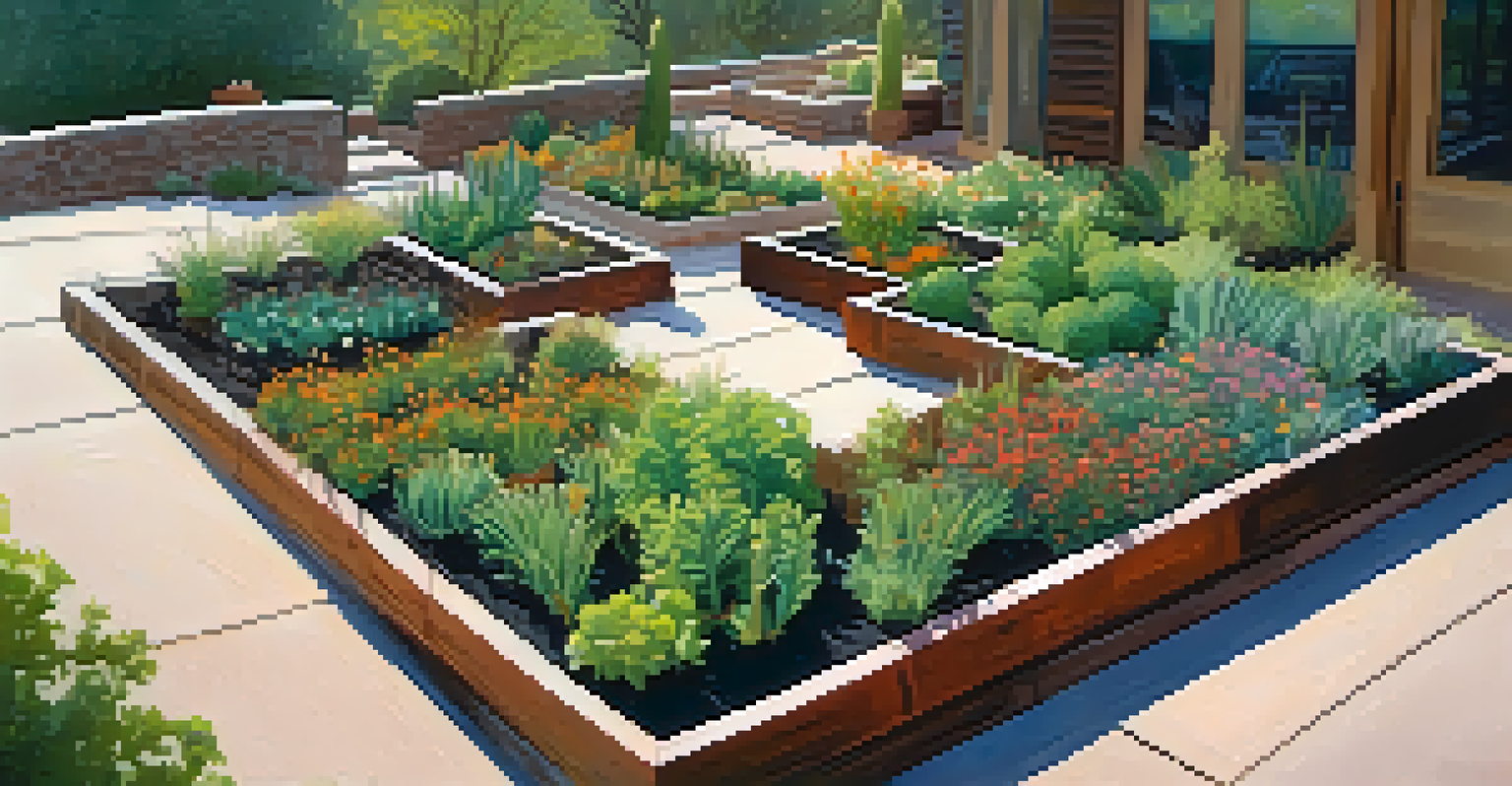The Role of Soil Amendments in Sedona Gardening

What Are Soil Amendments and Their Importance?
Soil amendments are materials added to the soil to improve its quality. In gardening, especially in Sedona's unique climate, these amendments are essential for creating a healthy environment for plants. They can enhance soil structure, nutrient content, and water retention, making them vital for successful gardening.
The health of the soil is the foundation of a healthy garden.
For instance, adding organic matter like compost can help retain moisture, which is particularly important in arid regions like Sedona. This helps prevent plants from drying out too quickly, allowing them to thrive. Additionally, soil amendments can improve drainage, ensuring that roots do not sit in waterlogged conditions.
Overall, understanding and using soil amendments effectively can make a significant difference in your gardening success. They not only contribute to plant health but also promote sustainable gardening practices by improving soil health over time.
Common Types of Soil Amendments for Sedona Gardens
There are several types of soil amendments to consider for your Sedona garden. Organic amendments like compost, well-rotted manure, and leaf mold are excellent for enriching soil. They provide essential nutrients and improve soil texture, making it easier for roots to grow.

Inorganic options, such as perlite, vermiculite, and gypsum, can also be beneficial. For example, perlite improves aeration and drainage, which is essential in sandy soils. Gypsum helps to break up compacted clay, making it easier for plants to establish their roots.
Soil Amendments Enhance Plant Health
Adding soil amendments improves soil quality, which is essential for creating a healthy environment for plants, especially in Sedona's unique climate.
Choosing the right combination of amendments can create an optimal growing environment. By understanding the specific qualities of these amendments, you can tailor your gardening approach to the unique needs of your plants and local soil conditions.
How Soil Amendments Affect Water Retention
One of the key benefits of soil amendments is their ability to improve water retention. In Sedona’s dry climate, keeping soil moisture is crucial for plant survival. Amendments like compost can hold water, allowing plants to access it more efficiently during hot, dry spells.
Soil is a living, breathing ecosystem, and it’s our job to nurture it.
For instance, when you mix compost into your soil, it acts like a sponge. This means that even when rain is scarce, your garden beds can retain moisture longer, reducing the need for frequent watering. This not only saves water but also promotes healthier root development.
Ultimately, the right soil amendments can create a balanced ecosystem in your garden. By enhancing water retention, you set the stage for flourishing plants that can withstand Sedona’s challenging climate.
The Role of pH in Soil Health and Plant Growth
Soil pH is a crucial factor influencing plant health and growth. In Sedona, the native soil can be alkaline, which may affect nutrient availability. Understanding how soil amendments can alter pH levels can be a game-changer for gardeners looking to cultivate a diverse range of plants.
For example, adding sulfur can help lower the pH, making the soil more acidic and suitable for plants like blueberries and azaleas. Conversely, lime can be used to raise the pH for plants that prefer alkaline conditions. Regularly testing your soil's pH and adjusting it using amendments ensures that your plants get the nutrients they need.
Water Retention is Crucial
Soil amendments like compost improve water retention, allowing plants to thrive even during Sedona's hot, dry spells.
By mastering soil pH and utilizing amendments accordingly, gardeners can create a thriving ecosystem. This attention to detail can lead to vibrant gardens that flourish in Sedona's unique conditions.
Improving Soil Structure with Amendments
Soil structure significantly impacts root growth and water movement. In Sedona, where the soil can often be sandy or rocky, using amendments can help improve the overall structure. This means that plants will have a better chance of establishing strong root systems.
Incorporating organic matter like compost creates aggregates in the soil, which enhances its texture. This not only improves drainage but also promotes better aeration, allowing roots to breathe. A well-structured soil also facilitates better access to nutrients, fostering healthy plant growth.
By focusing on soil structure, gardeners can create an environment that supports diverse plant life. The right amendments can transform challenging soil types into a nurturing habitat for your plants to thrive.
Using Soil Amendments for Sustainable Gardening
Sustainable gardening practices are increasingly important, especially in arid regions like Sedona. Soil amendments play a vital role in creating a sustainable ecosystem by improving soil health and reducing the need for chemical fertilizers. By using organic amendments, you can enrich the soil naturally.
For example, compost not only adds nutrients but also encourages beneficial microorganisms that enhance soil health. These microorganisms help break down organic matter, making nutrients more available to plants. This natural cycle of nutrient enhancement leads to a more resilient garden.
Sustainable Gardening Practices
Using organic soil amendments fosters sustainable gardening by enhancing soil health and reducing reliance on chemical fertilizers.
Incorporating sustainable practices through soil amendments can significantly reduce your environmental impact. It fosters a healthier balance in your garden, leading to long-term benefits for both your plants and the surrounding ecosystem.
Tips for Applying Soil Amendments Effectively
Applying soil amendments correctly is crucial for maximizing their benefits. Start by testing your soil to understand its current composition and nutrient levels. This will guide you in selecting the right amendments that cater to your garden’s unique needs.
When applying amendments, consider mixing them into the top 6-12 inches of soil. This ensures that the amendments integrate well and reach the root zone effectively. Using a garden fork or tiller can help in this process, allowing for even distribution throughout the soil.

Additionally, timing is essential. Applying amendments in the fall can help them break down and integrate into the soil by spring, giving your plants a head start. By following these tips, you can ensure that your soil amendments work effectively to support your gardening efforts.